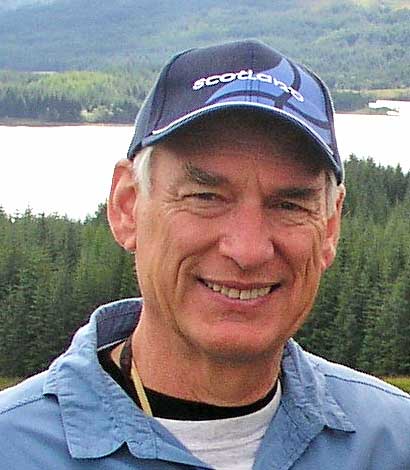Guide to the Cosmos
Making the Wonders of Our Universe Accessible to Everyone
Newsletter: Spooky Action-at-a-Distance Wins Nobel Prize
Just
in time for Halloween, the Nobel Prize was awarded to two physicists,
David Wineland of the U.S. and Serge Haroche of France, for achieving
something that would have boiled Einstein’s cauldron.
Nothing, neither fact nor fiction, is spookier than quantum mechanics (“QM”).
QM precisely describes the behavior of the natural world at microscopic
scales — molecules, atoms, and the even smaller particles from which
these are made — but QM predicts weird phenomena that defy our common
sense. It says a particle can be in two different places at the
same time, and can simultaneously spin clockwise and counterclockwise.
QM can even raise the undead. It says Schrödinger’s cat (undoubtedly a
black cat for Halloween) can be both alive and dead if it’s inside a sealed box, and will remain so until someone dares peak inside.
Why is the micro-world so spooky? Fundamentally, it is just the difference between ramps and staircases.

The
macro-world that we live in is like a ramp: an object can be placed at
any elevation one wishes. But, the micro-world is like a staircase: only
a few discrete elevations are possible. Nothing can be 2 1/2 steps
high, simply because there’s no step there. In the macro-world a planet
can orbit its star at any distance, while in the micro-world an electron
can only exist in a limited number of orbits in an atom.
For small things like electrons, the size of these steps is dramatic.
For larger objects, the steps seem smaller. We’re so much bigger than
electrons that the tiny individual staircase steps are unobservable and
what we perceive is a ramp.
QM
limits our ability to predict the future. It says we can calculate
probabilities of various outcomes but never know for sure what will
happen. Einstein rejected these disturbing claims of QM, famously
declaring: “God does not play with dice.” His friend Niels Bohr
admonished Einstein: “Don’t tell God what to do with His dice.”
QM also declares that two distant particles can be “entangled” —
operating in unison, linked by an undetectable choreography that
Einstein denounced as: “spooky action-at-a-distance.”
Regarding QM, Einstein was wrong. The predictions of QM have been
definitely confirmed by exquisitely precise experiments. In the
micro-world, nature really is spooky, as Wineland and Haroche have
shown.
Wineland works at
NIST, the U.S. National Institute of Standards and Technology, which
makes the world’s most precise clocks. NIST clocks are driven by the
oscillations of individual atoms, and are accurate to one second in 3.7
billion years. These clocks are so precise that they have confirmed
Einstein’s prediction that time runs slower where gravity is stronger.
When NIST scientists elevated their clock by one foot, they measured it
running faster by one millionth of a second per year, because gravity is
minutely weaker one foot further from Earth’s center. Time-critical
functions across the world, including GPS, are synchronized to the
world’s best clocks at NIST. During the past 15 years, four Nobel Prizes
have been awarded to NIST scientists.
Wineland’s
team is also striving to enable quantum computing. They trap individual
atoms and cool them to 1/10,000th of a degree above absolute zero (–460º
F). A laser beam then nudges a single electron into a higher energy
state that offers two distinct orientations. As QM directs, the electron
occupies both orientations simultaneously, forming a “qubit.” Numbers
in normal computers are stored in arrays of “binary bits”, with each bit
being either 0 or 1 (the 4-bit sequence 1001 represents 9). An 8-bit
“byte” can represent any one number from 0 to 255. But, since qubits represent combinations of 0 and 1, 8 qubits can simultaneously represent every
number between 0 and 255. This will allow a quantum computer to perform
a calculation on all these values in a single operation, vastly
expanding computing power. We’re not there yet. Wineland has can control
up to 14 qubits at once; modern computer cores have millions of bits.
Haroche traps photons, individual particles of light, between superbly
polished, ultra cold mirrors. The mirrors are so exquisite that a photon
can bounce between them billions of times before being absorbed or
scattered out the side. Haroche has arranged photons that oscillate in
two opposite directions at the same time — a coherent superposition
state — and measured how long the coherence lasts until the disturbing
effects of the macro-world creep in. Haroche and his team have developed
feedback techniques to extend coherence lifetime, which will be crucial
in developing practical quantum computers.
Once
quantum computing becomes possible, they will be able to rapidly crack
even the most complex security codes. So all this science has immediate
“real world” applications, and is heavily funded by numerous
governments.
Wineland and Haroche will each receive $600,000 (tax-free).
P.S.
Haroche said he was walking home with his wife when his cell phone
rang, displaying the area code of Sweden. He sat down on a nearby bench
and realized what this call would mean and was overwhelmed. He planned
to celebrate his Nobel Prize at home with champagne, family and friends
…. and then go back to his lab.
Best Regards,
Robert
October 30, 2012

(in the Scottish Highlands after speaking
to the Edinburgh Astronomical Society)
Note: Previous newsletters can be found on my website.
|